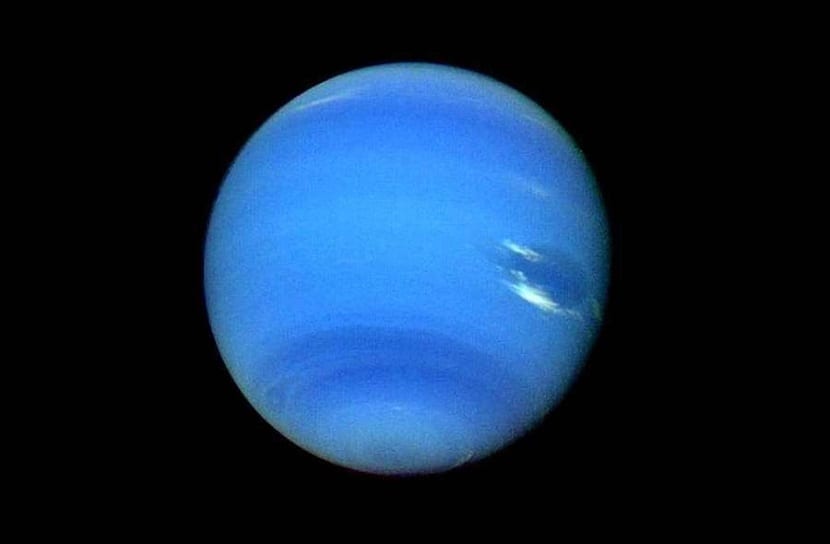
Neptuno it is the farthest planet from all of ours Solar system. Behind him is only the "Planet Pluto and Oort Cloud, which marks the limits of our Solar System. It is the farthest planet of all the gas giants (Jupiter, Saturn y Uranus). Thanks to advances in science and mathematics it was discovered from predictions in mathematics. Its name comes from the Roman god Neptune and it has been named after its blue color and because Neptune is the lord of all waters.
With this article you will be able to learn all the characteristics of the planet Neptune as well as discover some special curiosities. Do you want to know more about the last planet in the Solar System? If you keep reading you can learn everything.
Basic data
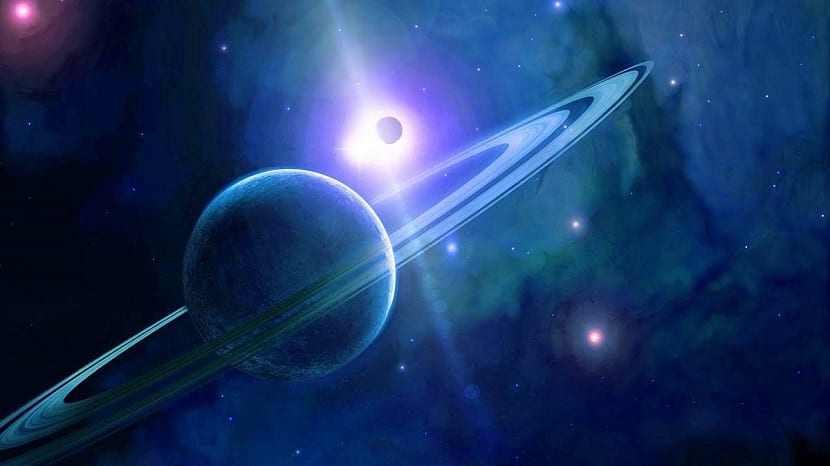
Neptuno It is the farthest planet and the fourth in the tail of the gas giants. Both Uranus and Neptune are known as icy giants because their temperatures are extremely low due to their distance from the Sun. If we compare it with the rest of the planets, it is the fourth largest and the third in mass. The mass of this gas giant is 17 times that of our planet.
It has an equatorial radius of 24.622 km and is located at a distance of 4.498.252.900km from the Sun. Unlike our planet, which takes about 24 hours to turn around on itself (see Rotational movements), this ice cream giant takes only 16 hours. However, the orbit around the Sun that defines the passing of the years becomes something eternal. What for us is one year (which is how long it takes to go around the Sun), for the planet Neptune it is 164,8 years.
It is called an ice giant because its average surface temperature is at -220 degrees compared to 15 degrees on our planet. Being a planet larger than Earth, its surface gravity at the equator is 11 m / s2.
When these planets are called gas giants it does not mean that they are composed entirely of gases. Neptune's core is made of molten rock with a mixture of water, liquid ammonia and methane gas. The characteristic blue color is not due to the presence of water on the surface, but its main atmospheric gas is methane.
Magnetic field and rings of Neptune
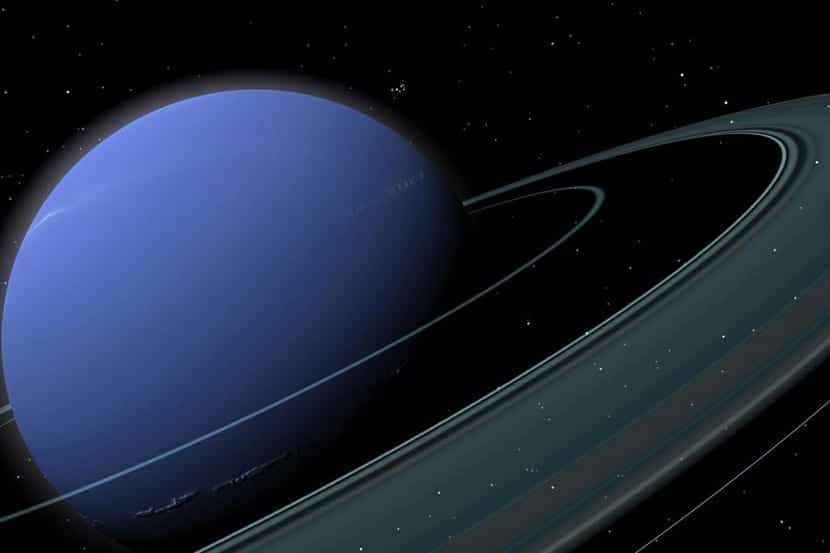
If we analyze the magnetic field of this frozen giant, we observe that it is inclined about 47 degrees with respect to the axis of rotation and displaced 13.500 km from its center. In this case, it is not the inclination of the planet that causes this deviation to occur, but rather the fluxes that exist inside matter and gases cause the electromagnetic field to deviate.
Contrary to what can be observed, Neptune, like Saturn, has rings. The proof of this was obtained by the Voyager II spacecraft when, in 1989, it managed to photograph the planet and approach its orbit. In addition, it not only has characteristic rings, rather it has 8 moons. This is something that breaks the schemes, as long as we consider the characteristics of the Earth as normal. Although at the end of the day, there is nothing normal and pre-established, since we are the humans who put the categories.
Although it seems something invented, Neptune has a system made up of 4 rather narrow and thin rings with a faint color. This is what makes them unrecognizable with a spotting scope. The rings are made up of dust particles that have been torn off over the years from the inner moons. These fragments have been crowded together by the effect of gravity and have been detached from their moons by the impacts of smaller meteorites.
Gases and atmosphere
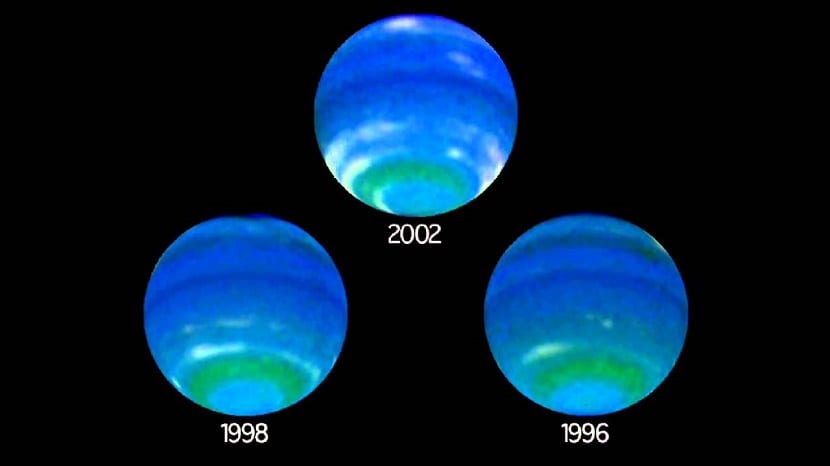
As can be seen, being a gas giant, its atmosphere is an important aspect to take into account. It can be seen if the surface of the planet is analyzed with the naked eye that it has spots similar to the storms present on Jupiter. However, these spots are not stable as on the other planet, but they form and disappear as time passes. This helps us to deduce the presence of storms of great intensity but not long.
He had the so-called Great Dark Spot with a size similar to that of our planet, but it disappeared in 1994. Later another one was formed. This gives us to understand the succulent formation of storms that take place in the atmosphere. It should also be mentioned that the winds that blow on Neptune have been considered the strongest of all the planets that make up the Solar System. Many of these winds blow in the opposite direction to that of its axis of rotation.
As a curious fact, in areas close to that Great Dark Spot winds of up to 2.000 km / h could be recorded. Probably, a human being subjected to those winds, dies dragged and hit by the pressure of the air.
Dynamics and changes of the atmosphere
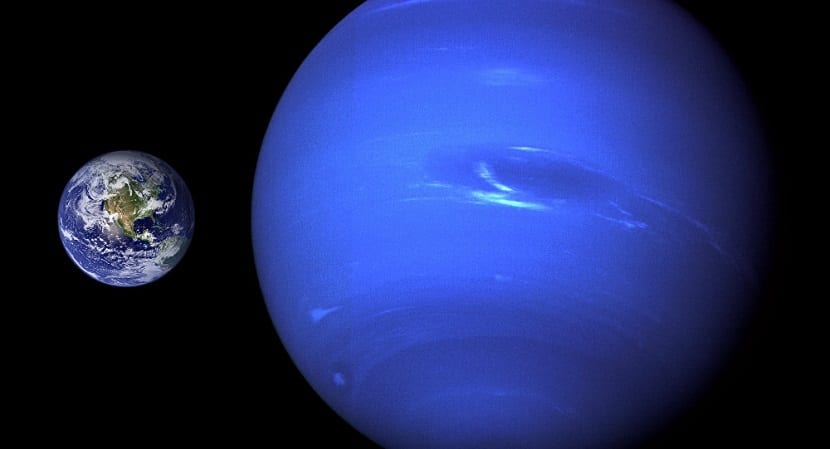
The photos of this planet in books and documents change over the years, since it is not maintained in the same way. The spots that are formed and destroyed change the morphology with which we see the planet. Regarding temperatures, temperatures so low have been recorded that they have been around -260 degrees, while on Earth, the lowest recorded is -90 degrees.
The composition of the atmosphere contains hydrogen and helium in greater proportion and some nitrogen altogether. All over the surface we can find areas with water ice, methane and ammonia ice (At these low temperatures the gases freeze). Clouds are not water vapor, since there is no vapor at those temperatures. They are made of frozen methane and change relatively quickly.
I hope that with this information you can learn more about Neptune and its special characteristics.